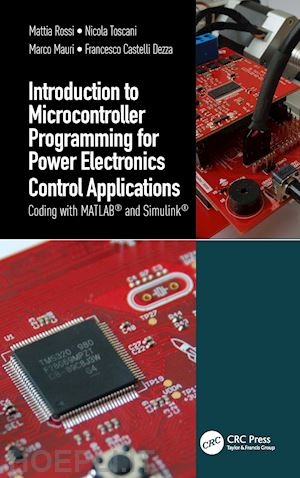Microcontroller programming is not a trivial task. Indeed, it is necessary to set correctly the required peripherals by using programming languages like C/C++ or directly machine code. Nevertheless, MathWorks® developed a model-based workflow linked with an automatic code generation tool able to translate Simulink® schemes into executable files. This represents a rapid prototyping procedure, and it can be applied to many microcontroller boards available on the market. Among them, this introductory book focuses on the C2000 LaunchPadTM family from Texas InstrumentsTM to provide the reader basic programming strategies, implementation guidelines and hardware considerations for some power electronics-based control applications. Starting from simple examples such as turning on/off on-board LEDs, Analog-to-Digital conversion, waveform generation, or how a Pulse-Width-Modulation peripheral should be managed, the reader is guided through the settings of the specific MCU-related Simulink® blocks enabled for code translation. Then, the book proposes several control problems in terms of power management of RL and RLC loads (e.g., involving DC-DC converters) and closed-loop control of DC motors. The control schemes are investigated as well as the working principles of power converter topologies needed to drive the systems under investigation. Finally, a couple of exercises are proposed to check the reader’s understanding while presenting a processor-in-the loop (PIL) technique to either emulate the dynamics of complex systems or testing computational performance. Thus, this book is oriented to graduate students of electrical and automation and control engineering pursuing a curriculum in power electronics and drives, as well as to engineers and researchers who want to deepen their knowledge and acquire new competences in the design and implementations of control schemes aimed to the aforementioned application fields. Indeed, it is assumed that the reader is well acquainted with fundamentals of electrical machines and power electronics, as well as with continuous-time modeling strategies and linear control techniques. In addition, familiarity with sampled-data, discrete-time system analysis and embedded design topics is a plus. However, even if these competences are helpful, they are not essential, since this book provides some basic knowledge even to whom is approaching these topics for the first time. Key concepts are developed from scratch, including a brief review of control theory and modeling strategies for power electronic-based systems.












